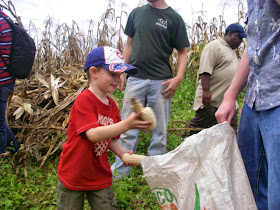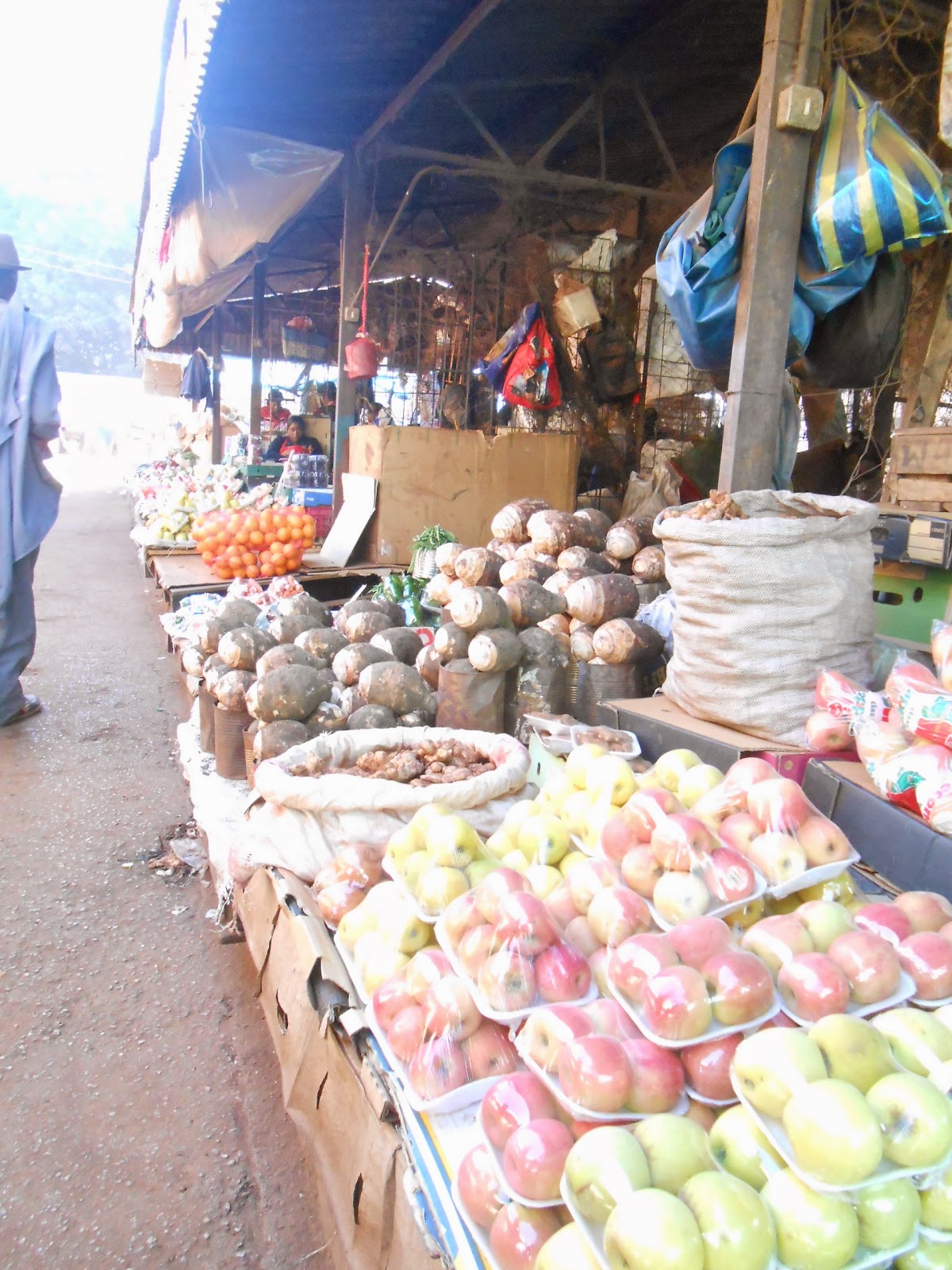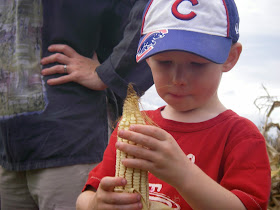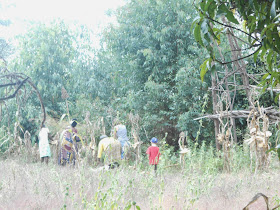So for those of you reading this blog from a place with British ties, you will think this is old hat. But I have to introduce my American friends to this amazing food that I have discovered only since moving to Africa. It is not hard to see that merengue is everywhere in my country, found on grocery shelves in a number of colors and shapes as a clear sign of my country's previous colonial ties. (For those of you Americans that -like me- think this sounds weird, let me clarify that we are not talking about the type of merengue found on top of a lemon-merengue pie, but rather a cooked, crunchy piece of heaven that dissolves like sugar in the mouth.) And the best use for this merengue? A beautiful thing called a pavlova... A slice of merengue on the bottom is covered with whipped cream or a granadilla/lemon curd mixture, then topped with fresh fruit. I just can 't say no...
Monday, May 26, 2014
Tuesday, May 20, 2014
The Bargaining Thing...
Our third day in Zimbabwe, we sat with new
colleagues, all American, and gabbed about our backgrounds and prior travels.
As the conversation strangely turned to a few loud men discussing their
bargaining techniques, I became less than impressed. These over-confident men bragged about their
skills lowering the dollars and cents they paid to people living farther below
the poverty line than they could ever get coming from a country like America. I
felt like I was listening to a conversation of Wall Street CEOs figuring out
how to scrape even more cream off the top.
What difference did an extra dollar or two make to them, while a dollar
could buy that vendor’s entire family dinner?
People back home ask me all the time how we shop and how we deal with "the bargaining thing." It's a hard question to answer, and I have certainly evolved. At first I approached the markets differently than
many of our new, well cultured, colleagues. Though Kurt and I were scraping by
with student loan debt and an unexpected mortgage payment that followed us to
Africa at the last second, concepts no market vendor could possibly understand, I just decided
that I would either pay what the vendor asked, or move on. No hemming and
hawing, no sly negotiation, no insulting their products. Just a yes or no. It seemed decent. And I was happy. And it
worked. The problem was, I usually never
bought anything.
After I’d been in Zim long enough, it became
clear. As my housekeeper and a number of
others have explained to me, there is a Shona price. There is a white person price. And if you open your mouth to let them hear
your accent, there is an American price.
“Americans are the most guilty, so that is why this works on them,” my
housekeeper Ziwone had laughed. Racial complications aside, she went on
to explain that it was insulting to someone when I did not bargain, but just
asked a price, said “okay,” and walked away.
“No one will accept a price that will make them go broke. Bargaining is in our culture. It is more rude to ask and walk away than to try to negotiate.” Meanwhile, I watched as I
came home with tomatoes twice the price of my neighbor’s, and one head of
cabbage when the housekeeper would have gotten two. And forget about souvenirs.
Two years later things are different. I’ve lived in a bargaining culture that has
slowly worn me down and subconsciously evolved my thinking while I have been
busy looking at chotchkies and curios. I
now have a method, which usually involves asking for the price of two other
things before I find out the price of what I really want. I know what things cost from the source, and
what the mark-up is. And I know how to unapologetically
ignore the pushy vendor that will not get out of my face. Somehow when I wasn’t
watching, I went from being the “guilty” American to being a savy shopper proud
of saving a dollar here or there. I
patted myself on the back for being thrifty while living on one income… And suddenly I realized it was
quite the same way I had done while living in the US.
I’ll admit it. When I lived in the States, I would occasionally
drive to Walmart or a different grocery store across town, all to save a dollar. Though I always preferred to support smaller
businesses and local (often more high-quality) products, there were times my wallet spoke louder than my
ideals. I was happy to find a
bargain. And it was how I made ends meet.
 But recently our visiting guest, Kyle, unintentionally reminded me
about something very important that I had nearly entirely forgotten after
living in an African bargaining culture for two years. I watched as Kyle,
absolutely uninterested in buying a product, chatted with vendors about their
process and goods. I watched as he kindly
negotiated, and I remembered what it was like to be a soft skinned American wanting
to remember my privilege. And I remembered once again that a dollar does make a
huge difference to someone who has very few.
But recently our visiting guest, Kyle, unintentionally reminded me
about something very important that I had nearly entirely forgotten after
living in an African bargaining culture for two years. I watched as Kyle,
absolutely uninterested in buying a product, chatted with vendors about their
process and goods. I watched as he kindly
negotiated, and I remembered what it was like to be a soft skinned American wanting
to remember my privilege. And I remembered once again that a dollar does make a
huge difference to someone who has very few.
The bargaining thing is more personal; I
have to say no to someone’s face instead of to a numb Mega-Mart shelf. There is inherently more guilt
associated. But there is also more humanity. The Mega-Mart shelf is eternally more comfortable;
there is a price and you take it or leave it. But what we forget when we shop
like that is that there is still a little man or woman making the item. He/she’s
just a few more steps removed, so the potential guilt at knowing someone is
being paid pennies for their hour of work is farther away from our conscious thought. The Mega-Mart shelf may be an easier option,
but as Kyle so wonderfully reminded me, there is also something very powerful
about the human interactions and learning that come from the process of
bargaining face to face.
I’ll be honest. As with so many things, when it comes to the
bargaining thing I am still uncomfortably dancing around to find my footing on
a happy medium. It is easy to become desensitized
when you find yourself in a different geography and, over time, evolve for
better and worse away from your original values. Wanting to represent your family’s budget
smartly in contrast with wanting to give a small local vendor their fair share
can feel challenging… But the more I think about it, the challenge exists anywhere
I live… whether in America or Africa.
Sunday, May 18, 2014
Monkey Apple Balls
Called the "monkey orange" or "matamba" in Zimbabwe, I laughed when I recently heard the South African name for this fruit for the first time. "Monkey apple balls," as they are called, are a gently sweet and sour fruit found throughout the country in a number of places, but usually not on a grocery shelf. Though I've introduced these matamba fruits before in their mucus-y edible state, they are actually much more commonly seen as a decorative item. Here are a few of their uses once dried:
decorative candleholders


salt and pepper shakers with a re-used plastic lid as a stand/refill plug
filled with small gravel and attached to sticks to make musical maracas
painted, carved, and polished as decorative balls or Christmas ornaments
Tuesday, May 13, 2014
A Maizing
We have just completed another harvest
season here in southern Africa. Though crops grow year-round, the main
sustenance here is a little thing I’ve mentioned often: maize.
Though we have oodles of personal pictures
from harvest, this year I thought I’d instead share some more
about how the lifeblood of this country -sadza- comes into being. I’ve said before that this dish is a staple, but
that may be underselling it a bit. Most in the country would not be alive
without this food.
 |
| This sign, recently taken at a local orphanage, is the perfect example of how much survival for the economically-challenged is based entirely on one carbohydrate. * |
Maize is made into drinks: called maheu, this drink is thick, creamy, and slightly gritty and sour. (Left to ferment, it can also become an alcoholic drink.) I gag on this stuff; it is an acquired taste that I cannot seem to... acquire.
Maize is eaten at breakfast. Called porridge, it sometimes can have sugar,
lactose (a fermented milk), or peanut butter in it.
Maize is eaten at lunch/afternoon tea. Called sadza (or mealie meal or mealie pap), is often eaten plain or
with a “relish” made of greens and sometimes salt or MSG seasoning.
Maize is eaten as a snack. It comes in the form of roasted ears of corn available on roadsides, or as popcorn, or as a puffed corn snack called "maputi" found in bags at stores.
Maize is eaten at dinner. As the largest meal the day, dinnertime sadza is eaten with greens or vegetables, or if one is lucky, a special treat of meat. Here is how it gets to many dinner plates:
Maize is planted in our country during the months of August and September. This can be tricky, as the rains do not start until late October. Dependent upon weather (especially rainfall), harvest of the maize occurs in April or very early May. Below we are harvesting on a sunny fall day in late April. Though it is not a practice everyone around the country has learned, in places like the field below, pumpkins (mboora) or African cucumbers are grown on the ground, able to vine themselves up cornstalks in a symbiotic-like relationship that helps soil erosion and nutrient balance.


If dry enough, the maize plant can be chopped at the bottom and the ear can be cleaned right away.


If the plant is not dry enough, the stalks are cut and then piled (left) and left to dry for three or four days before being cleaned (right).
The ears are separated from the husk and silk. The old stalks will be piled up for feeding cattle later during the dry winter.


If a family has them, bags are passed out to collect the ears of maize that have been pulled off the stalks. Otherwise, piles are made, then ears are moved with a cart to the interior of a building to stay dry.
Family and friends sometimes return to the rural areas from the cities to help with harvest.


Because of this, harvest can often be a happy community event with big meals and many reasons to gather in celebration.


Above we wash our hands at a hostess' home before having tea, sweet potatoes, and bread.
This would usually be done in the kitchen hut, like the one above, but because the community gathering was so large, we instead sat on tarps spread on the ground (below).


As customary, the women sit lower and separate from the men.
After tea we return to the fields. Here our little guy helps with a side section of popcorn.
The stalks look pretty much the same; only inside the husk do the kernels look slightly different.
As the harvest ends, sounds of thanks and celebration are a happy moment.
The maize will sit and dry some more.
When completely dry, the small dry kernels are scraped off the ears. They will be ground initially with stones to break them up a bit, then stored in bags until they are needed.

As the maize meal is needed for sadza, a family takes their slightly ground maize to a mill. It sometimes must be carried many kilometers. The mill pictured above is at an orphanage. The orphanage is lucky to have this gift; it is used by the orphanage, but many surrounding families come and pay a small fee to grind their maize here, also. In this way the mill serves as a money-making opportunity for the orphanage.

There are many differing grain-sizes of meal. Roller meal is the largest (and cheapest, being ground down the least), and must be cooked the longest to be edible. The highest quality meal in the country is a very finely ground meal called pearlenta.
After being ground,the meal looks like white sand. It is cooked with hot and cold water, a large pot, and always a wooden spoon.
Sadza is cooked thicker than breakfast porridge so it can be eaten with the hands. Women get some huge upper arm muscles from making this dish so often!


Here it is, from farm to dinner plate. A maizing!
magwinya- a fried African bread I will post about someday...
kapenta- small dried fish often cooked in tomatoes.
lacto- the same as lactose; a fermented milk
maheu- a maize drink
porridge- cooked mealie meal (maize)
samp- cornmeal mush made from maize kernels ground slightly larger than mealie meal
soya- soybeans
Sunday, May 11, 2014
The Colors of Zim
This interior designer has always been fascinated with color. But the interest has exponentially grown since moving to Africa. After a recent trip to the paint store, I decided I should mention to you wonderful readers that color is a very cultural and geographically specific thing. (Not to mention generational and gender biased!)
Meet the ugliest shade of pink known to man, found ev-er-y-where in my current life:


This color is commonly known as "Rhodesian Pink." This gaud-awful color -that has no business landing itself on any piece of architecture- can be found all over Zim on houses, gates, and landmarks, and is a quintessential mark of the old Rhodesian ("Old Rhodies'") influence on culture in the country. The color is seen by many as upscale and upper-class, and interpreted by many older Zimbabweans as a sign of wealth. My. Least. Favorite. Color. Ever.
Me? Opinionated? Why, yes. Yes, I am.
But I'm also dealing with a teensy bit of cultural bias. Let's just say I did not grow up seeing a lot of salmon-pink houses in my day.
A set of our neighbors recently built a cottage on their property for the in-laws to retire into. They invited me over to help pick out an exterior color. Looking at their initially selected paint samples, I gave them my American choice (navy blue with white trim and apple green accents) and then my Zimbabwean choice (a modern stone-gray with white and yellow accents) to go with the newly installed tiles already on the roof. The American choice was if I could do it my way. The Zimbabwean choice was to make it fit in with the neighborhood's existing schemes.
Our neighbors loved the Zimbabwean set of colors and started to paint the cottage. When the older in-laws saw the color scheme, they were horrified. "Gray? That's the color of filthy concrete! No. We couldn't live with that."
Our neighbors explained how gray is a new, clean, modern color. "It's fresh and updated," they had retorted. But Old Rhodesian mom and dad were having none of it. Add a few more weeks of debate and an additional two hundred color swatches.
The end result: The two cottage walls that face our neighbors' house are a lovely gray with yellow and white accents. The two walls that face outward toward the street are a bright Rhodesian pink!
Not only are color preferences based on many cultural biases, but the names of colors are, as well. Some researchers have spent their entire careers studying the intersection of culture and color. I like to think that if ever I was forced to be a scientist -gasp- that is exactly what I would study, too. We all know that different cultures have different symbolism for different colors. But opinions on color go way beyond that. A variety of things -from one's surroundings, to the availability of a color, or the size of the color, or the linguistics of color, or the light being used- can affect the way a culture interprets a color and therefore how a person mentally and physically reacts to a color.
Am I going into too much detail for those of you not interested in how Crayola has affected the world? I'll stop myself here for your sake, but let me throw in a small portion of paint swatch examples that so very uniquely demonstrate where I am living. These are not the names you'll find at your Western paint counter:
Organdy = a crisp cotton cloth previously made in Zim,
Springbok = an antelope found in Southern Africa,
Dry Gold = mined in Zim,
Bleached Baobab = a tree that grows in the dry portions of the country
Tea Cookie = a standard food in groceries here,
Whaky Khaki = the color worn by rangers, hunters, and anyone on safari,
Bushbuck = a large antelope found in Southern Africa
http://www.wired.com/2012/06/the-crayola-fication-of-the-world-how-we-gave-colors-names-and-it-messed-with-our-brains-part-i/
http://www.wired.com/2012/06/the-crayola-fication-of-the-world-how-we-gave-colors-names-and-it-messed-with-our-brains-part-ii/
http://www.colormatters.com/



























